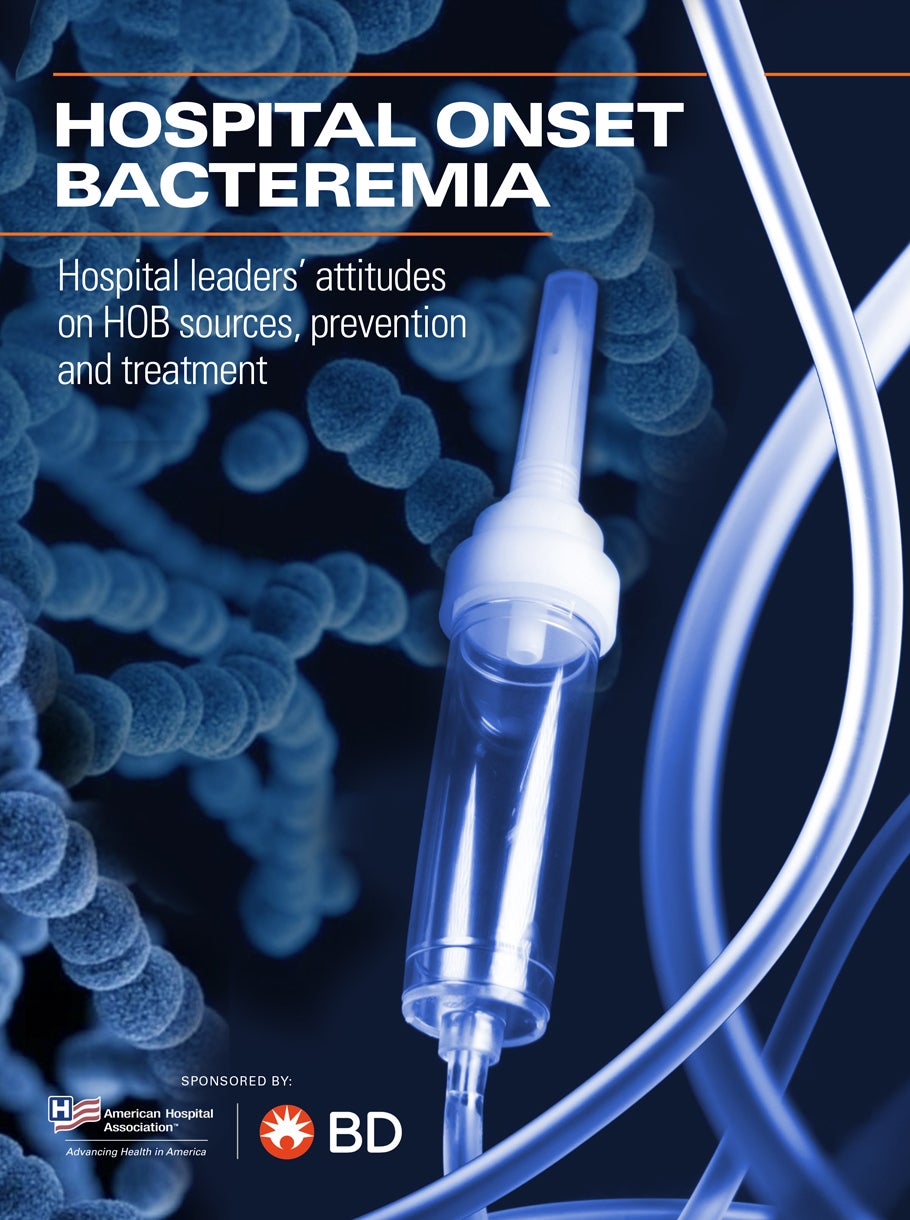
Hospital Onset Bacteremia
Executive Dialogue
Hospital leaders’ attitudes on HOB sources, prevention and treatment
Clinical studies have determined that hospital onset bacteremia (HOB) and false-positive blood cultures can have significant impacts on outcomes, length of stay and cost of care. The Centers for Disease Control & Prevention (CDC) is developing a quality measure reflecting HOB rates. The Centers for Medicare & Medicaid Services (CMS) included the HOB measure on its 2021 Measures Under Consideration list, which means the agency could propose the measure in future CMS hospital quality-reporting and value programs. With these developments, hospital leaders have a timely opportunity to give renewed consideration to how HOB is prevented, detected, treated and reported.
In October 2022, the American Hospital Association (AHA) and Becton Dickinson (BD) held the “AHA Virtual Think Tank: Systematic approaches to health care-associated infection prevention,” an event for hospital and health system leaders in infectious disease, laboratory, nursing and other roles. The discussions identified additional information needs, which informed a survey to develop baseline data and additional insights about how various roles within hospitals view sources of HOB, its identification, how effectively HOB can be prevented and considerations for quality metrics. Results and commentary are presented in this report, which hospital leaders can use to assess their organizations, inform improvement efforts and prepare for potential reporting requirements.
Major findings from the workshop and survey include:
- 1. When surveyed, 45% of respondents already were tracking HOB and another 20% planned to do so as soon as possible. The rest were waiting for specific developments (e.g., from CMS, CDC, the National Healthcare Safety Network [NHSN] or measure endorsement by the federal consensus-based entity).
- 2. Most HOB cases are considered preventable or partially preventable, especially those from central-line catheters and urinary sources, which are viewed as major contributors to HOBs.
- 3. Several resources are considered impactful for mitigating HOB given the perception that currently reportable health care-associated infections (HAIs) are thought to be significant sources of HOB. Therefore, current HAI bundles may help inform any new HOB bundle. Respondents identified best practices they would like included in an HOB bundle; these include visibility to HOB sources and respective prevention measures, timely pathogen identification if HOB occurs, and improvement in definitive therapy for HOB cases.
- 4. Streamlined microbiology lab workflows and communication with antimicrobial stewardship programs (ASPs) also may help facilitate faster identification and therapy for HOB events.
- 5. Respondents are optimistic that an HOB quality metric will improve patient safety and care, but expressed concerns about how metrics should be structured, achieving reporting consistency and the potential resources needed for reporting.
- 6. Nearly three out of four respondents (73%) believe future reporting metrics should consider patient demographics that may have predisposing clinical risk factors for HOB. However, respondents were split as to whether some populations should be excluded from HOB reporting, with 30% favoring some exclusions, 49% saying there should not be exclusions and 21% unsure.
- 7. Other opportunities for education differed by professional role, which will be important for leaders to consider when formulating plans and policies.
Participants

Akin Demehin, MPH
Senior Director, Quality and Patient Safety Policy
American Hospital Association

Kalvin Yu, M.D., FIDSA
Vice President, Medical and Scientific Affairs
Becton Dickinson
AHA Executive Dialogue Series
Gain insights from the C-suite and health care leaders on the most pressing issues and transformational strategies.








